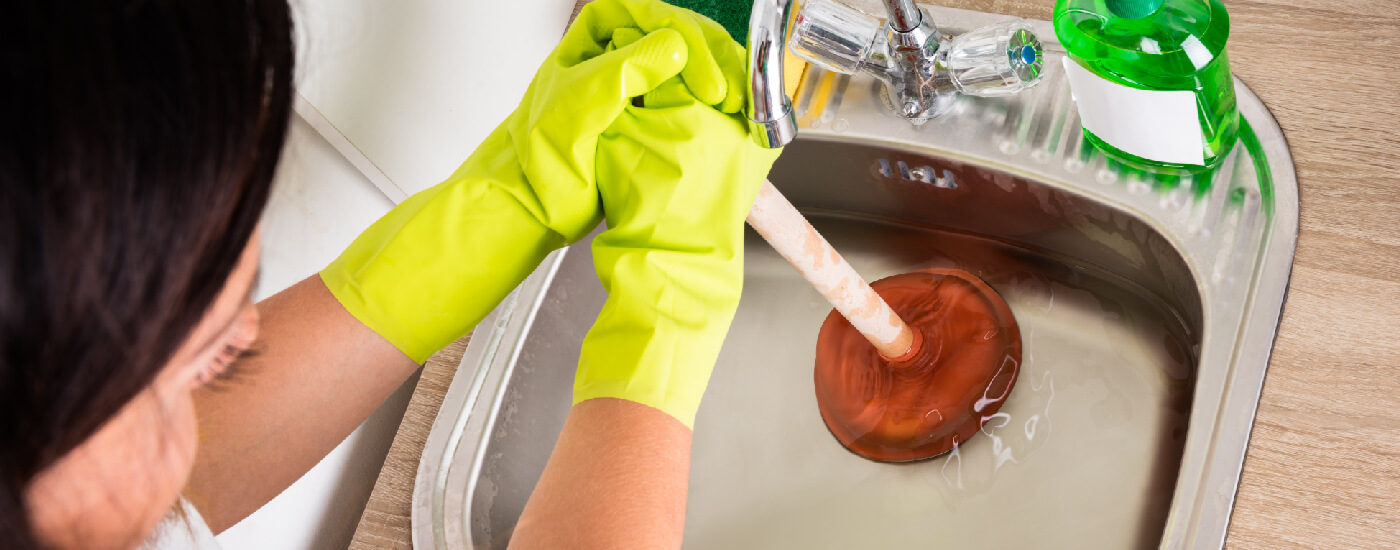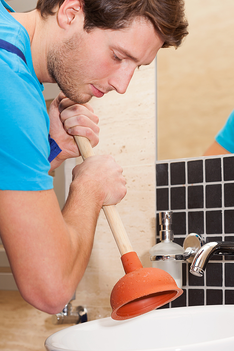Improving Plungers and Drain Cleaner: Pro Methods
Improving Plungers and Drain Cleaner: Pro Methods
Blog Article
Almost everyone seems to have their own individual rationale about Tips on How to Effectively Use a Plunger.

Introduction
Appropriate upkeep of house drains pipes is important for preventing obstructions and ensuring smooth water flow. One of the trick tools in every property owner's toolkit is the plunger, along with numerous drainpipe cleansers designed to tackle stubborn obstructions effectively. This write-up checks out exactly how to make use of bettors and drain cleansers effectively to keep your drains moving openly.
Area 1: Comprehending Plungers
Sorts of Plungers
There are several types of bettors available, each designed for different types of drains and clogs. One of the most common types consist of mug bettors, flange plungers, and accordion plungers.
How Plungers Work
Bettors work with the concept of producing stress and suction to remove clogs. When properly applied over a drain, they develop a vacuum cleaner that can pull out debris or separate clogs.
Picking the Right Plunger
Picking the appropriate plunger depends on the sort of drain and the nature of the blockage. Cup plungers are perfect for sinks and bathtubs, while flange plungers are better matched for bathrooms as a result of their layout.
Typical Mistakes with Plungers
Preventing these errors makes sure effective plunging: incorrect seal around the drainpipe, inadequate pressure, and unclear bordering particles.
Area 2: Making Use Of Plungers Successfully
Preparation
Prior to plunging, make sure the plunger covers the drain totally and develops a tight seal. Clear any type of visible debris around the drainpipe opening.
Strategy
Begin with mild diving motions to develop suction. Rise stress gradually, utilizing a consistent rhythm. Repeat as required until the drain gets rid of.
Fixing Tips
If diving doesn't function, try adjusting the seal, using petroleum jelly for a much better seal, or utilizing a various sort of plunger.
Area 3: Recognizing Drainpipe Cleaners
Kinds Of Drain Cleaning Company
Drain pipes cleansers can be chemical or enzymatic. Chemical cleansers utilize strong chemicals to liquify blockages, while enzymatic cleansers utilize all-natural enzymes to break down raw material.
How Drainpipe Cleaners Job
Chemical cleaners respond with clogs to liquify them, while chemical cleaners break down natural materials like hair and grease without damaging pipes.
Security Factors to consider
Always put on handwear covers and eye defense when using chemical drainpipe cleansers. Make sure sufficient air flow and comply with manufacturer directions meticulously.
Eco-Friendly Alternatives
Think about utilizing vinegar and cooking soft drink or enzyme-based cleansers for green options that are safer for pipelines and the setting.
Area 4: Making Use Of Drainpipe Cleansers Successfully
Application Methods
Pour chemical cleansers straight right into the drain opening. Allow them to benefit the suggested time before flushing with warm water. Enzymatic cleaners need to rest over night.
Safety measures
Avoid mixing different kinds of cleansers, as this can produce hazardous fumes. Never ever use chemical cleansers in conjunction with a plunger, as splashing can occur.
Dealing With Persistent Obstructions
For consistent clogs, think about making use of a plumbing snake or calling a specialist plumbing to stop damages to pipes.
Final thought
To conclude, recognizing how to use plungers and drain cleaners successfully is crucial for maintaining healthy plumbing systems. By choosing the right tools and techniques, homeowners can tackle small obstructions and protect against significant pipes problems down the line.
How to Use a Plunger to Unclog a Drain
The humble plunger is a simple yet effective tool for breaking clogs in sinks, tubs and toilets. This handy tool is easy to use. You can make the most of its power if you understand how it works. Ready to dive in? Here’s what you need to know.
Safety First!
Never use a plunger with drain chemicals. Water will splash as you work, and the chemicals can spatter, burning skin and eyes. It’s a good idea to use rubber gloves and wear safety goggles when you work on a clog.
Choose the Right Tool for the Job
Plungers come in two different styles. Sinks, bathtubs and showers require a cup plunger. Like its name suggests, the rubber end is shaped like a cup. Use a flange plunger on toilets. These plungers have a rubber funnel extending from the cup. A plunger needs to be big enough to cover the drain.
Ready, Set, Plunge!
Coat the rim: Coat the plunger rim with petroleum jelly. This helps make a better seal.
Block outlets: Hold a wet rag over nearby outlets such as the overflow vent or the drain in a second sink.
Release air: Insert the plunger at an angle into the water. Water will displace air in the cup. A water-filled cup is more forceful than one filled with air.
Keep the plunger upright: Hold the plunger perpendicular to the drain. Use fast, forceful strokes, but make the first stroke gentle. The first stroke can create a splash if the cup still contains air. Thrust the plunger 15 to 20 times.
Snap off the plunger: The final stroke should be a strong upward motion that ends when the plunger snaps off the drain.
Repeat the process: you may need to repeat this sequence several times. When the water drains away, your work is done. High-five! https://plumbernw.com/blog/how-to-use-a-plunger-to-unclog-a-drain/

Application Methods
Pour chemical cleansers straight right into the drain opening. Allow them to benefit the suggested time before flushing with warm water. Enzymatic cleaners need to rest over night.
Safety measures
Avoid mixing different kinds of cleansers, as this can produce hazardous fumes. Never ever use chemical cleansers in conjunction with a plunger, as splashing can occur.
Dealing With Persistent Obstructions
For consistent clogs, think about making use of a plumbing snake or calling a specialist plumbing to stop damages to pipes.
Final thought
To conclude, recognizing how to use plungers and drain cleaners successfully is crucial for maintaining healthy plumbing systems. By choosing the right tools and techniques, homeowners can tackle small obstructions and protect against significant pipes problems down the line.
How to Use a Plunger to Unclog a Drain
The humble plunger is a simple yet effective tool for breaking clogs in sinks, tubs and toilets. This handy tool is easy to use. You can make the most of its power if you understand how it works. Ready to dive in? Here’s what you need to know.
Safety First!
Never use a plunger with drain chemicals. Water will splash as you work, and the chemicals can spatter, burning skin and eyes. It’s a good idea to use rubber gloves and wear safety goggles when you work on a clog.
Choose the Right Tool for the Job
Plungers come in two different styles. Sinks, bathtubs and showers require a cup plunger. Like its name suggests, the rubber end is shaped like a cup. Use a flange plunger on toilets. These plungers have a rubber funnel extending from the cup. A plunger needs to be big enough to cover the drain.
Ready, Set, Plunge!
Coat the rim: Coat the plunger rim with petroleum jelly. This helps make a better seal. Block outlets: Hold a wet rag over nearby outlets such as the overflow vent or the drain in a second sink. Release air: Insert the plunger at an angle into the water. Water will displace air in the cup. A water-filled cup is more forceful than one filled with air. Keep the plunger upright: Hold the plunger perpendicular to the drain. Use fast, forceful strokes, but make the first stroke gentle. The first stroke can create a splash if the cup still contains air. Thrust the plunger 15 to 20 times. Snap off the plunger: The final stroke should be a strong upward motion that ends when the plunger snaps off the drain. Repeat the process: you may need to repeat this sequence several times. When the water drains away, your work is done. High-five! https://plumbernw.com/blog/how-to-use-a-plunger-to-unclog-a-drain/

I stumbled upon that blog post on Here's How to Correctly Use a Toilet Plunger while doing a search on the search engines. So long as you enjoyed reading our blog post plz don't forget to share it. I am grateful for your time. Revisit us soon.
Go Company Report this page